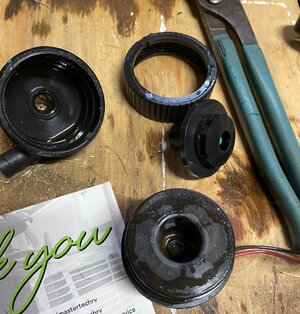They don’t have a bearing - the impeller just floats on the magnetic field. So as far as I can tell, when they fail its electrical - a sealed coil of some sort. You can see in the second pic what happened when I tried to bench test a failed pump “motor” with the impeller out.
View attachment 21338
View attachment 21337
Edit - correction (great article btw) There is a rotating shaft in the sealed motor which, according to this article, rides on a bearing or bushing. I can see how that could fail and once it does the motor seizes up and pops fuses, or in the case of applying current on the bench it lets the smoke out.
View attachment 21339
From the article:
“Bearing Wear: In mag-drive pumps, the bearings operate close to the magnets, which can cause increased friction and wear and result in increased maintenance requirements.“
So in the last 2 weeks, what have we learned?
1. The fluid in the system changes Ph! It appears to go acidic.
2. The pump runs all the time.
3. The expansion tank can, or is open to the environment (may lead to fluid contamination).
4. Bearings in motor fail.
We have also learned that many articles, and there drawings are not proofed.
What we or I don't know?
1. What kind of Bearing are used (ceramic would offer longest life)?
2. Is the motor brushless(if brushed no hope)?
3. How often is the fluid replaced?
To avoid misinformation, I would like to dispel, and get us back on track!!! The common refrigerator is constantly turned on and off, and many have seen lives well over 20 years. This is made possible using closed systems. An electric motor has one weak link, the Bearings. In the case of a sealed compressor there are no brushes, and the Bearings are not lubricated with grease. Ceramic Bearing when used require little lubricant.
So how can we increase the life of our system?
With the system as it sits. Check the Ph of the fluid on a schedule. Make sure there are no airlocks. Only run the system when aboard the vessel, or when required. I the pump has any of the above shortcomings, only two things you can do! Find a commercial pump, or reduce the hours you put on it!!! I agree with
@Neemer or was that
@J&JD there is no reason cycling should reduce it's life.














